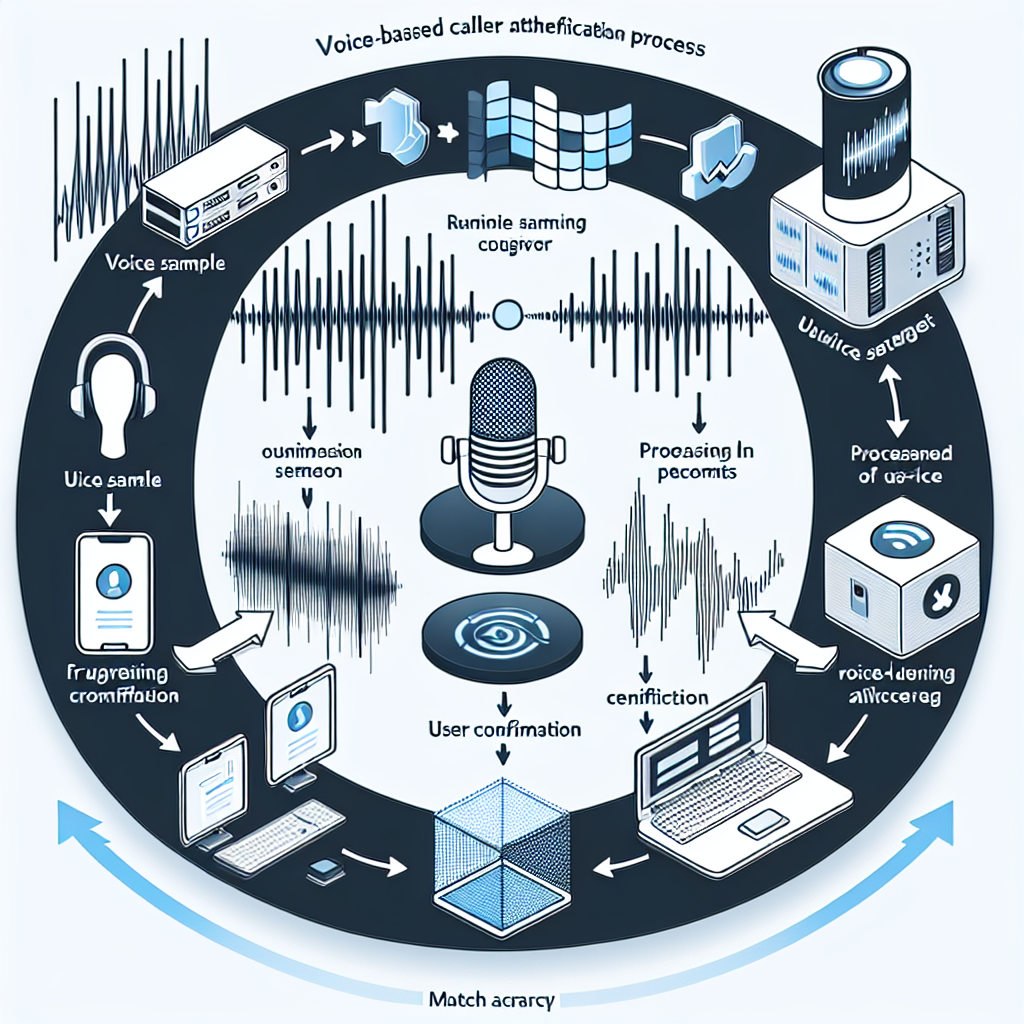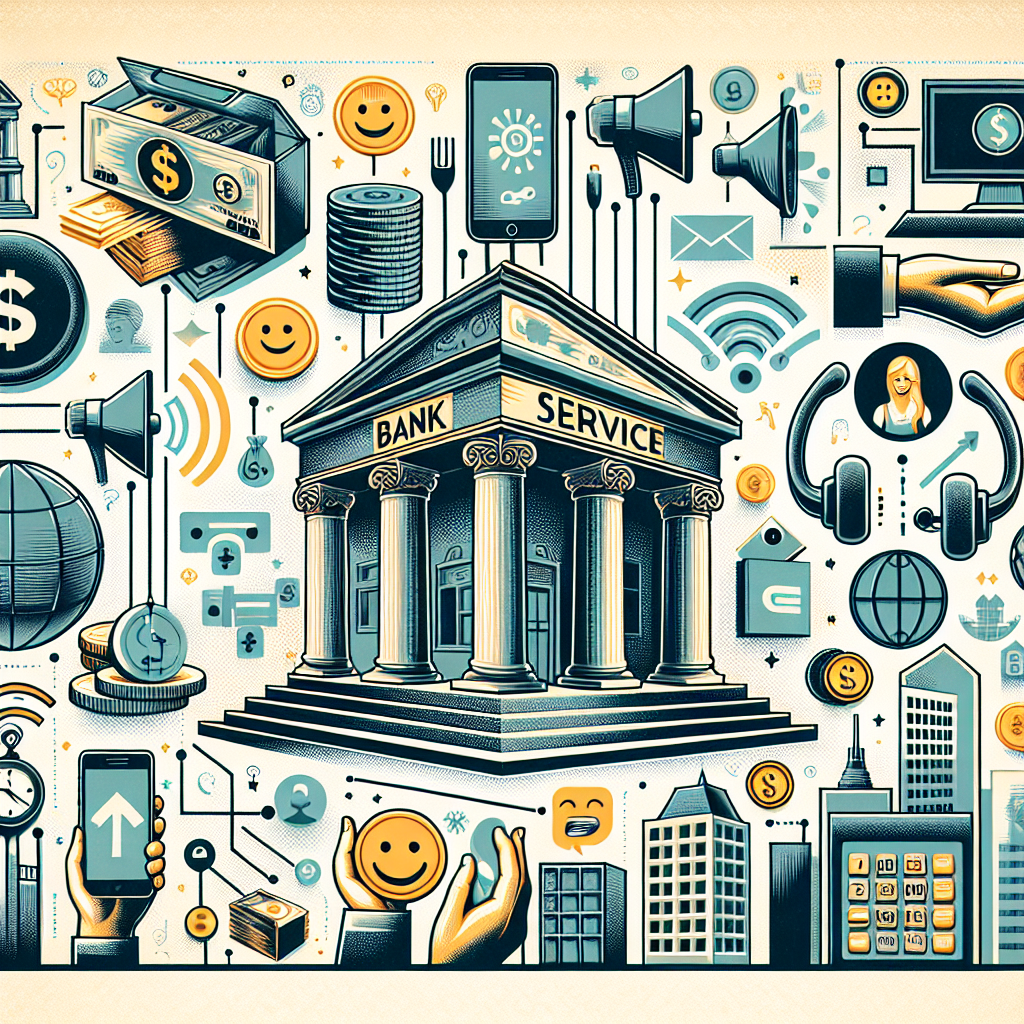
In an era defined by technological advancements, herein lays a powerful authentication method, voice-based caller authentication. Largely utilized by businesses and financial institutions, the transformative method leverages the unique characteristics of an individual's voice for verification purposes. By straddling the line between high-end security and user convenience, voice authentication proves to be an essential tool for contemporary organizations.

As a core component of biometric authentication, voice-based verification exploits the physical and behavioral attributes of an individual's vocal patterns. Each voice print is as unique as a fingerprint, making it an infallible ID. For a system to authenticate a caller using their voice, the individual must first provide a voice print by speaking a predetermined phrase. Once this is completed, future calls can be authenticated immediately by comparing live audio with the saved voice print. Thus, it chalks out a smooth user experience, devoid of typical password-oriented hassles.
In this digital era, identity fraud and data breaches are rampant, necessitating robust security measures. Voice authentication offers a powerful solution to these threats. Its ease of use doesn't compromise its high level of security, thereby satiating a crucial requirement in the cybersecurity landscape.
As businesses contend with the necessity of protecting sensitive data, they are intensively exploring voice-based caller authentication as a reliable, easy-to-use, and effective means. The method, by perfecting the balance between security and convenience, is revolutionizing the way we validate and verify identity, dictating a paradigm shift in information access and customer service domains.
Voice-based caller authentication is a type of biometric technology that captures a person's unique vocal characteristics to verify their identity. It offers both strengthened security for companies and significant convenience for users.
The first mechanism that enables voice authentication is voice biometrics. This technology works on the premise that individuals have unique voice prints. Just as no two people have identical fingerprints, each person has a unique pattern formed by the shape and size of their mouth and throat, coupled with the manner in which they articulate words.
Voice biometrics software creates a digital model of these vocal characteristics, known as the voice print or voice signature. When an individual makes a request via phone, the system compares the caller's voice against the stored voice print in real time, thereby verifying the caller's identity.
Voice authentication also relies heavily on pattern recognition mechanisms. It uses acoustic features such as pitch, tone, and rhythm to analyze the speaker's voice. Applying machine learning techniques allows the system to continuously learn from each interaction, enhancing its recognition accuracy.
One of the most significant advancements in voice authentication is its integration with artificial intelligence (AI). AI in conjunction with Natural Language Understanding(NLU) and Speech Recognition technologies has not only improved the accuracy of voice-based authentication but has also made it possible to analyze the content and context of the conversation. This provides an added layer of security, as the system can detect suspicious behavior even if the voice itself is authenticated.
In conclusion, voice-based caller authentication achieves a delicate balance between security and convenience. It leverages advanced technologies like voice biometrics, pattern recognition, and AI to provide a secure and user-friendly authentication process. As it continues to evolve and integrate more sophisticated technologies, it promises to be a key factor in enterprise security strategies.
Among many digital security advancements, voice-based caller authentication stands out as a balancing act between robust security and user convenience. It employs a user's unique vocal qualities as a biometric identifier, making it an additional layer of security that works on top of traditional methods like pins and passwords. Learn more about voice recognition technologies.
Unlike the conventional methods, which can pose risks when credentials are compromised, voice authentication curbs foul play effectively. Fraudsters attempting to mimic your voice, or using a recorded version, can find it quite a challenging task to bypass sophisticated voice recognition systems. Modern systems can identify a live voice from a recorded one, hence eliminating common fraud attempts. Look into how voice-based authentication works to prevent fraudulent activities.

Moreover, unauthorized access is significantly reduced with voice-based caller authentication. This technology's capability to analyze hundreds of unique voice characteristics ensures that only the approved caller gets access. Voice authentication has displayed a high degree of accuracy in distinguishing between similar sounding voices, further deterring unauthorized intrusions. Dive deeper into the accuracy and reliability of voice-based authentication.
But why stop at fraud prevention and intrusion deterrence? Voice recognition also promises significant advantages in tracking call history and identifying habitual fraudsters. Explore the application of voice recognition in tracking potential threats.
In terms of convenience, voice authentication can't be beaten. No need to remember pesky passwords or answer security questions. Just speak, and you're in. This makes it much suitable for seniors or those with physical disabilities. Here's how voice-based caller authentication enhances user convenience.
In conclusion, the balance between security and convenience provided by voice-based caller authentication has propelled it to the forefront of digital security measures. The method of using human voices as 'passwords' is increasingly making waves in both public and private sectors.
While voice-based caller authentication presents a unique, secure form of biometric authentication, it comes with its share of challenges and limitations. Addressing these is essential to achieve a perfect balance between security and convenience.
One significant challenge is the influence of background noise on voice recognition accuracy. Sound interference such as busy streets, chatter or machinery noise can pose severe hurdles in recognizing a user’s voice accurately. Several voice authentication technologies have been developed to filter out these distortions, but they are still a far cry from being perfect. You can find more about voice recognition technologies and their effectiveness against noise interference at this link.
Another limitation is the potential for voice imitation. Though voice prints are distinct and hard to copy, voice imitation or synthesis is not entirely impossible. Highly skilled actors, twins, or advanced voice-mimicking software can pose serious threats to the security of voice authentication systems. Here is a compelling study on the impact of voice imitation on voice-based biometric authentication.
Finally, privacy concerns are inseparable from biometric authentication methods, including voice-based systems. Since users' voices are unique biometric data, there's a looming threat of misuse or potential breaches that could compromise user's privacy. Voiceprint theft is a grave concern, and organizations need to invest in robust technologies that ensure user voice data is securely stored and protected. A better understanding of voiceprint security will help to overcome such challenges.
Despite these challenges, voice-based caller authentication remains a promising technology, offering a unique blend of security and convenience. It is poised to revolutionize the way we perceive security and authentication today.
In an increasing number of industries, voice-based caller authentication is revolutionizing security, convenience, and customer service. Throughout several key market sectors including banking, customer service, and telecommunications, the balance between security and convenience has been significantly improved.

In the financial sphere, leading banks have made successful strides in voice authentication. A prime example is Barclays Bank, which introduced a voice recognition system in 2016. The bank has since reported a reduction in fraud, noting the technology's ability to detect if a voice is live or pre-recorded. Barclays' customers have also appreciated the reduction in security questions, creating a seamless user experience. Meanwhile, HSBC also opted for voice-based authentication technology, making them the first bank in the UK to use this system.
Telecommunication companies have also seen a significant benefit from voice authentication. Vodafone employed advanced voice authentication technology to improve their customer service experience. They reported a decrease in handling times for client calls and an increase in customer satisfaction rates.
Customer service centres face the ongoing challenge of dealing with an enormous volume of calls, while needing to ensure they are speaking to the legitimate customer. Aetna, a prominent healthcare company, used voice authentication in their call centers with incredible results. The company was not only able to increase security and reduce fraud but also significantly cut down their average call times. This move has also greatly improved the customer's experience and overall satisfaction.
These snapshots from the banking, telecommunications, and customer service industry demonstrate the potential real-world applications of voice-based authentication. For these institutions, the implementation of such technology helps to strike a balance between security and convenience, ultimately facilitating enhanced customer engagement and protection against fraud.
The case studies mentioned above are a glimpse into the great value brought by voice-based technologies in enhancing security and convenience in today's world.
As we look towards the future, the potential of voice-based caller authentication becomes even more exciting. Advances in this cutting-edge technology are expected to provide a healthier balance between security and convenience, making it an essential feature of our daily life. Whether it's the banking sector, healthcare, or customer support, the next decade will probably see a lot more voice biometrics in action.
One of the significant future advancements that experts predict is the integration with other biometric modalities. While voice recognition offers distinct advantages, supplementary modalities like facial recognition and fingerprint scanning can fortify the identification process. This multi-modal approach could ensure a more reliable and robust system, making caller authentication seamless and more secure.
Moreover, the application of Artificial Intelligence (AI) and Machine Learning will refine voice recognition algorithms, contributing to improved accuracy. Innovations like spoof detection algorithms will also become more sophisticated, helping in detecting and rejecting recorded or synthetic voices used for malicious intent.
When it comes to the impact on different sectors, healthcare and banking sectors stand to benefit the most. In the healthcare sector, voice biometrics can provide secure access to patient records, facilitating telehealth services, while in the banking sector, it can play a pivotal role in curbing financial frauds.
However, as with any technology, there are potential challenges. Issues surrounding privacy and data security will need to be addressed, with regulatory frameworks in place for data storage and processing. Furthermore, the technology must be able to accommodate variations in voice due to age, health, or environmental factors.
Indeed, the future of voice authentication is promising, with significant potential for security and convenience. While there are hurdles to overcome, the possibilities it presents in this era of digital transformation are endless.
Start your free trial for My AI Front Desk today, it takes minutes to setup!








